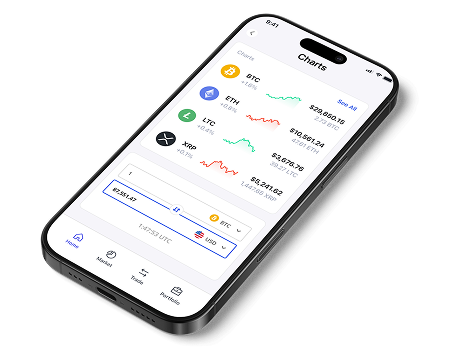Understanding Economic Bubbles: Lessons from History
5 min read • June 15, 2023

Introduction
Table of Contents
- Introduction
- What is an Economic Bubble?
- The Tulip Mania (1637): A Lesson in Irrational Exuberance
- The South Sea Bubble (1720): The Perils of Financial Manipulation
- The Dot-Com Bubble (The late 1990s): Lessons in Technological Euphoria
- The Housing Bubble (2007-2008): A Lesson in Asset Bubbles
- The Role of Government and Regulation
- The Psychological Factors
- The Role of Information and Technology
- Conclusion
Economic bubbles are a fascinating and often perilous phenomenon in the world of finance and economics. These bubbles, characterized by rapid and unsustainable increases in the prices of assets, have captured the imagination of investors, economists, and historians alike. While each bubble may have its unique characteristics and triggers, there are common threads that run through many of them. In this blog, we will delve into the world of economic bubbles, explore some of the most famous historical examples, and draw valuable lessons for investors and policymakers.
What is an Economic Bubble?
An economic bubble is a situation in which the prices of assets, such as stocks, real estate, or commodities, rise far above their intrinsic values, driven by speculation, hype, and exuberance rather than fundamental factors like earnings or demand. Bubbles typically end in a sudden and sharp correction, leading to a crash in asset prices and often causing significant economic and financial turmoil.
The Tulip Mania (1637): A Lesson in Irrational Exuberance
One of the earliest recorded economic bubbles was the Dutch Tulip Mania of the 17th century. Tulips, introduced to the Netherlands from the Ottoman Empire, became a status symbol, and their prices soared to astronomical levels. At the peak of the bubble, a single tulip bulb could cost as much as a house. However, the bubble burst in 1637, leaving many investors with worthless bulbs.
Lesson 1: Beware of Irrational Exuberance
The Tulip Mania serves as a stark reminder of the dangers of irrational exuberance. Investors should be cautious when asset prices detach from their intrinsic value due to speculative fervor.
The South Sea Bubble (1720): The Perils of Financial Manipulation
The South Sea Bubble in England during the early 18th century is another classic example. The South Sea Company, established to reduce national debt, enticed investors with promises of untold riches from trading with South America. Shares in the company skyrocketed as people bought into the hype. However, the company had no real assets or profitable ventures, and the bubble eventually burst, leading to significant financial losses.
Lesson 2: Scrutinize the Fundamentals
The South Sea Bubble demonstrates the importance of conducting due diligence. Investors should carefully analyze the underlying assets and business models of companies before investing.
The Dot-Com Bubble (Late 1990s): Lessons in Technological Euphoria
The late 1990s saw the rise of the Dot-Com Bubble, driven by the rapid growth of internet-related companies. Investors poured money into startups with little or no profits, expecting them to become the next big thing. When the bubble burst in the early 2000s, countless internet companies went bankrupt, and stock markets plummeted.
Lesson 3: Diversify Your Portfolio
Diversification is key. The Dot-Com Bubble teaches us that concentrating investments in a single sector or asset class can expose investors to substantial risks when that sector falls out of favor.
The Housing Bubble (2007-2008): A Lesson in Asset Bubbles
The housing bubble of the mid-2000s is a more recent example. Easy credit, lax lending standards, and the belief that home prices would keep rising led to a housing market frenzy. When the bubble burst, it triggered the global financial crisis.
Lesson 4: Monitor Debt Levels
High levels of debt can be a warning sign. The housing bubble highlights the dangers of excessive borrowing, which can amplify the impact of a bubble's burst.
The Role of Government and Regulation
While individual investors can take steps to protect themselves from the dangers of economic bubbles, government and regulatory bodies also play a crucial role in mitigating the impact of these events.
Lesson 5: Effective Regulation Matters
The history of economic bubbles underscores the importance of effective regulation. Regulators should monitor financial markets, enforce transparency, and implement policies to prevent excessive risk-taking and fraud.
The Psychological Factors
Understanding the psychological factors that contribute to economic bubbles is essential for investors and policymakers. Human emotions like greed, fear of missing out (FOMO), and herd behavior often play a significant role in inflating bubbles.
Lesson 6: Emotional Resilience
Investors must cultivate emotional resilience and discipline. Recognizing the influence of emotions in investment decisions can help individuals avoid making impulsive choices during times of market euphoria.
The Role of Information and Technology
In today's digital age, information spreads rapidly, and technology has transformed the investment landscape. While this can accelerate the formation of bubbles, it can also provide tools for better analysis and risk management.
Lesson 7: Leverage Technology Wisely
Investors can harness technology for research, data analysis, and risk assessment. Access to information and analytical tools can help identify potential bubbles and make informed investment decisions.
Conclusion
Economic bubbles are not a thing of the past. They continue to shape financial markets and impact economies worldwide. By studying the lessons from historical bubbles, we can gain valuable insights into market dynamics, investor behavior, and the importance of prudent financial practices.
In an ever-changing financial landscape, investors, policymakers, and regulators must remain vigilant, adaptable, and informed. While bubbles may be an inherent part of market cycles, their impact can be mitigated through a combination of education, regulation, and responsible investment practices.
Remember, the key takeaway from understanding economic bubbles is that history has a lot to teach us about the potential pitfalls of exuberance, overleveraging, and speculative behavior. By heeding these lessons and approaching investment with caution and wisdom, we can navigate the complex world of finance more successfully and reduce the risk of being caught in the next economic bubble's burst.
You can get your Real-Time and Historical Market Data with Finage free API key.
Build with us today!
Claim Your Free API Key Today
Access stock, forex and crypto market data with a free API key—no credit card required.

Stay Informed, Stay Ahead
Finage Blog: Data-Driven Insights & Ideas
Discover company news, announcements, updates, guides and more


